
In Greek mythology, Lotis was a nymph mentioned by Ovid.

Pierre Loti was a French naval officer and novelist, known for his exotic novels and short stories.

Cistus is a genus of flowering plants in the rockrose family Cistaceae, containing about 20 species. They are perennial shrubs found on dry or rocky soils throughout the Mediterranean region, from Morocco and Portugal through to the Middle East, and also on the Canary Islands.
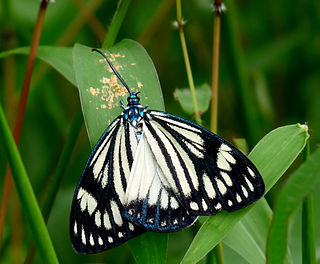
The Zygaenidae moths are a family of Lepidoptera. The majority of zygaenids are tropical, but they are nevertheless quite well represented in temperate regions. Some of the 1000 or so species are commonly known as burnet or forester moths, often qualified by the number of spots, although other families also have 'foresters'. They are also sometimes called smoky moths.
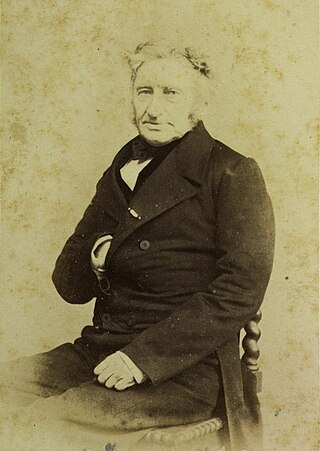
Heinrich Gottlieb Ludwig Reichenbach was a German botanist, ornithologist and illustrator. It was he who first requested Leopold Blaschka to make a set of glass marine invertebrate models for scientific education and museum showcasing, the successful commission giving rise to the creation of the Blaschkas' Glass sea creatures and, subsequently and indirectly, the more famous Glass Flowers.

Hans Reichenbach was a leading philosopher of science, educator, and proponent of logical empiricism. He was influential in the areas of science, education, and of logical empiricism. He founded the Gesellschaft für empirische Philosophie in Berlin in 1928, also known as the "Berlin Circle". Carl Gustav Hempel, Richard von Mises, David Hilbert and Kurt Grelling all became members of the Berlin Circle.

Cistus ladanifer is a species of flowering plant in the family Cistaceae. It is native to the western Mediterranean region. Common names include gum rockrose, labdanum, common gum cistus, and brown-eyed rockrose.
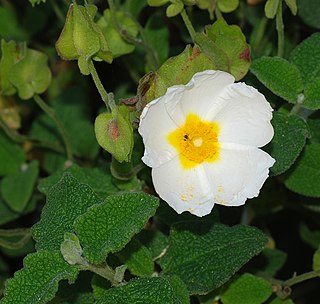
Cistus salviifolius, common names sage-leaved rock-rose, salvia cistus or Gallipoli rose, is a shrub of the family Cistaceae.
Bretenoux is a commune in the Lot department in southwestern France. The old town, a bastide, is an old medieval town designed with a grid street design with houses dating from 13th to the 16th Century's.

Hosackia gracilis, synonym Lotus formosissimus, is a species of legume native to western North America from British Columbia through Washington and Oregon to California. It was first described by George Bentham. It is known by the common names harlequin lotus and seaside bird's-foot trefoil. It grows in moist spots in the coastal mountains and down to the oceanside bluffs. It is a perennial herb growing upright or spreading to about 0.5 m in maximum length. It is lined with leaves each made up of a few oppositely arranged oval leaflets up to 2 cm long. The inflorescence is made up of several pealike flowers each 1 to 2 cm long. The flower has a bright yellow banner, or upper petal, and bright pink or white lower petals. The fruit is a legume pod 2 to 3 cm long.

Aricia is a genus of butterflies in the family Lycaenidae. The genus was erected by Ludwig Reichenbach in 1817.

Cistus × purpureus, commonly known as orchid rockrose, is one of the most commonly cultivated varieties of rockrose.

Cistus laurifolius, commonly called laurel-leaf cistus, laurel-leaved cistus or laurel-leaved rock rose, is a species of highly branched flowering evergreen shrub native to some areas around the Mediterranean.
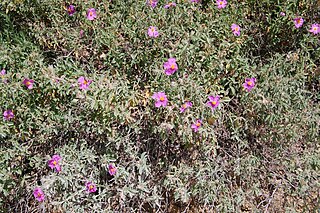
Cistus × incanusL. is a hybrid between Cistus albidus and Cistus crispus. The name "Cistus incanus" has been used by other authors in a different sense, for Cistus creticus. The English name hoary rock-rose may refer to this species, among others.

Cistus clusii is a shrubby species of flowering plant in the family Cistaceae, with white flowers, native to south west and south central Europe and north Africa. It has been wrongly called Cistus libanotis by many authors.

Cistus heterophyllus is a shrubby species of flowering plant in the family Cistaceae.

Cistus inflatus is a shrubby species of flowering plant in the family Cistaceae, often known as Cistus psilosepalus, although this name is a synonym of the hybrid Cistus × laxus. It has white flowers.
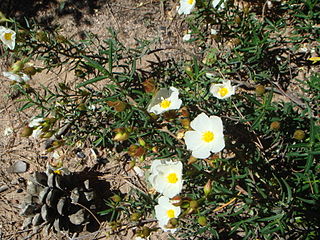
Cistus libanotis is a shrubby species of flowering plant in the family Cistaceae, with white flowers. It has been confused with Cistus clusii, which it resembles, resulting in some uncertainty in its distribution. It is endemic to the Iberian Peninsula.
Cistus ocreatus is a shrubby species of flowering plant in the family Cistaceae, with purple-pink flowers. It is sometimes treated as synonymous with Cistus symphytifolius or as its subspecies C. symphytifolius subsp. leucophyllus. Its name is sometimes spelt Cistus ochreatus. It is endemic to Gran Canaria in the Canary Islands.


















